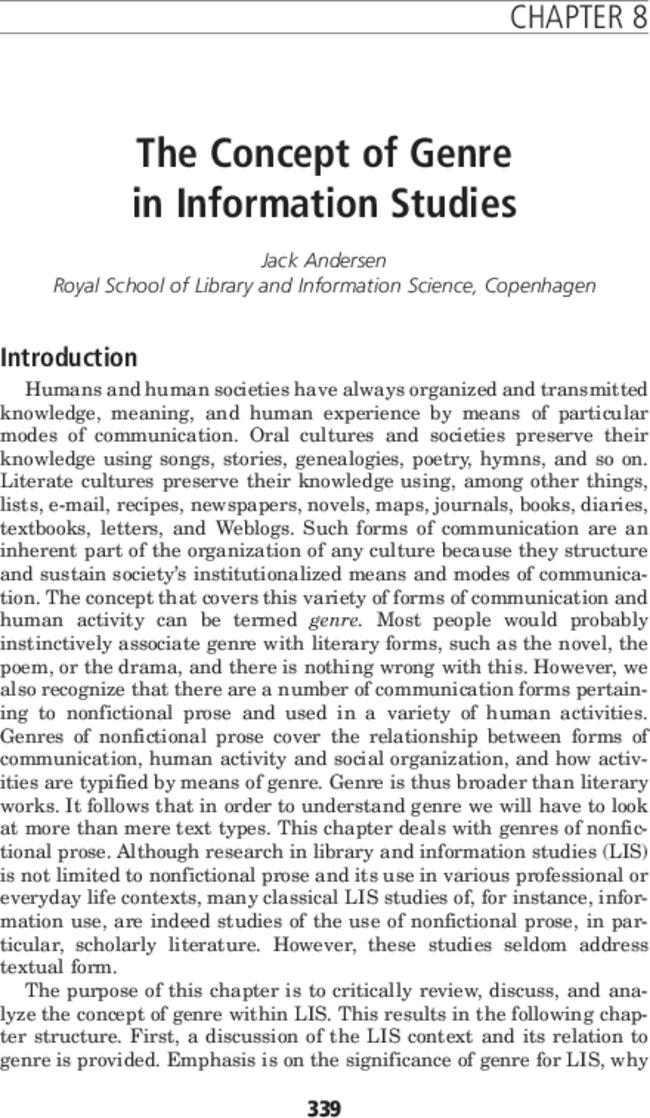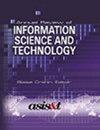The concept of genre in information studies
Annual Review of Information Science and Technology
Pub Date : 2009-11-05
DOI:10.1002/aris.2008.1440420115
引用次数: 84
Abstract
Humans and human societies have always organized and transmitted knowledge, meaning, and human experience by means of particular modes of communication. Oral cultures and societies preserve their knowledge using songs, stories, genealogies, poetry, hymns, and so on. Literate cultures preserve their knowledge using, among other things, lists, e-mail, recipes, newspapers, novels, maps, journals, books, diaries, textbooks, letters, and Weblogs. Such forms of communication are an inherent part of the organization of any culture because they structure and sustain society’s institutionalized means and modes of communication. The concept that covers this variety of forms of communication and human activity can be termed genre. Most people would probably instinctively associate genre with literary forms, such as the novel, the poem, or the drama, and there is nothing wrong with this. However, we also recognize that there are a number of communication forms pertaining to nonfictional prose and used in a variety of human activities. Genres of nonfictional prose cover the relationship between forms of communication, human activity and social organization, and how activities are typified by means of genre. Genre is thus broader than literary works. It follows that in order to understand genre we will have to look at more than mere text types. This chapter deals with genres of nonfictional prose. Although research in library and information studies (LIS) is not limited to nonfictional prose and its use in various professional or everyday life contexts, many classical LIS studies of, for instance, information use, are indeed studies of the use of nonfictional prose, in particular, scholarly literature. However, these studies seldom address textual form. The purpose of this chapter is to critically review, discuss, and analyze the concept of genre within LIS. This results in the following chapter structure. First, a discussion of the LIS context and its relation to genre is provided. Emphasis is on the significance of genre for LIS, why CHAPTER 8

信息学中的体裁概念
本文章由计算机程序翻译,如有差异,请以英文原文为准。
求助全文
约1分钟内获得全文
求助全文

 求助内容:
求助内容: 应助结果提醒方式:
应助结果提醒方式:


